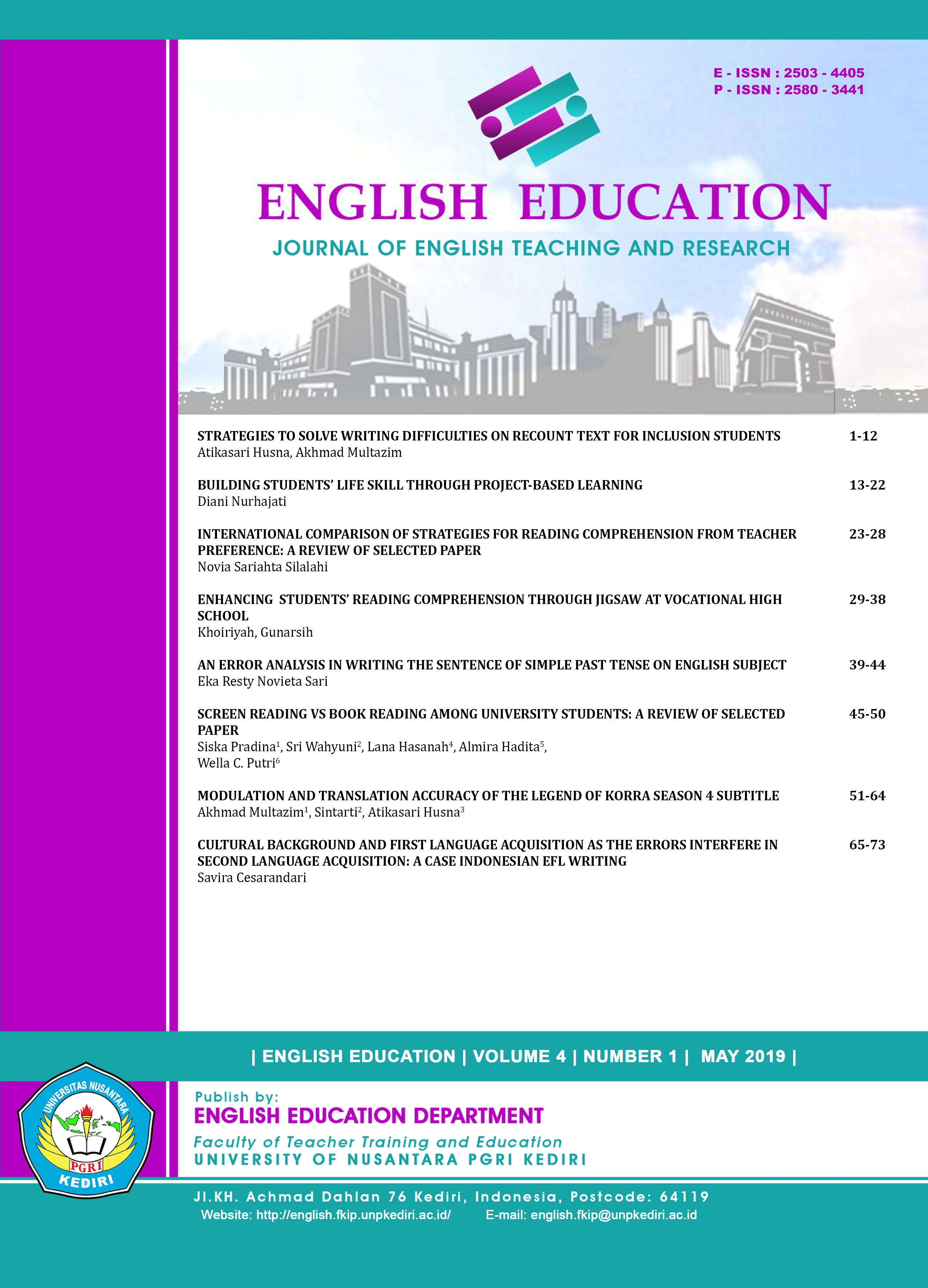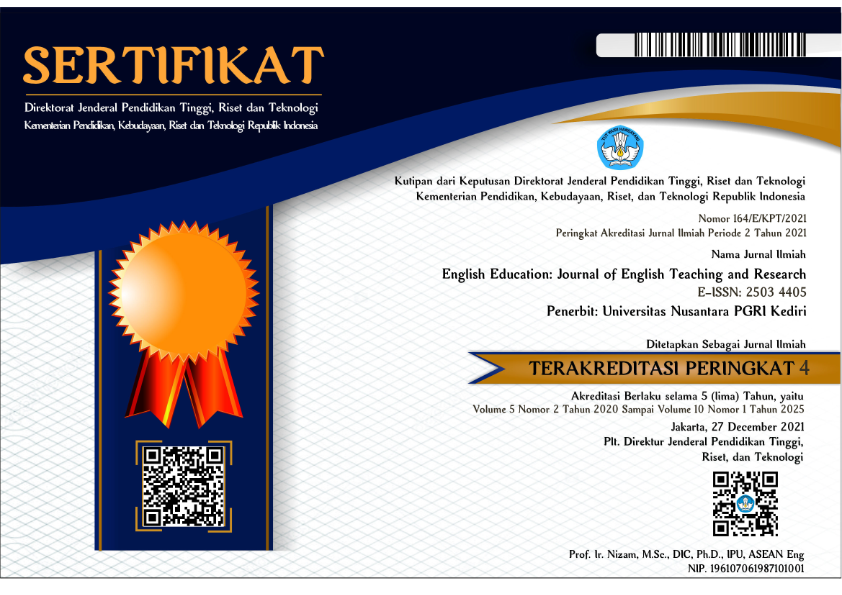The International Comparison of Strategies for Reading Comprehension from Teacher Preference: A Review of Selected Paper
DOI:
https://doi.org/10.29407/jetar.v4i1.12916Abstract
This paper intended to explore and giving an overview in strengths and weakness part of the proposed strategies in reading comprehension. The 18 pages article written by Scott Kissau and Florian Hiller (2013), entitled "Reading Comprehension Strategies: an international comparison of teacher preferences" the which is published in RCIE, volume 8, number 4, 2013. This article is the main focuses of this present study to discuss. The article was selected as this article focus to discuss an act in response to the panic world will lack the ability of reading comprehension at the moment of the millennial era. This research was conducted at a university located in the United States and Germany with participant prospective teachers in different contexts. By using a quantitative and qualitative data researcher general preference among participants from both countries studied to better understand what is considered an effective strategy in a particular content area and investigate the reading comprehension strategies that favoured prospective teachers in Germany and the United States in a variety of different contexts. And expecting their further studies involving participants from a large number of universities of different countries so as to produce variations in the results and generate the appropriate strategy to use in reading certain content. This paper using content analysis method. By using a quantitative and qualitative data researcher general preference among participants from both countries studied to better understand what is considered an effective strategy in a particular content area and investigate the reading comprehension strategies that favoured prospective teachers in Germany and the United States in a variety of different contexts. This presents study sees that the result from Scott Kissau and Florian Hiller research can be replicable. Therefore it is expecting another further study involving participants from a large number of universities of different countries so as to produce variations in the results and generate the appropriate strategy to use in reading certain content.
Downloads
Downloads
Published
Issue
Section
License
Authors who publish with this journal agree to the following terms:
- Copyright on any article is retained by the author(s).
- The author grants the journal, the right of first publication with the work simultaneously licensed under a Creative Commons Attribution License that allows others to share the work with an acknowledgment of the work’s authorship and initial publication in this journal.
- Authors are able to enter into separate, additional contractual arrangements for the non-exclusive distribution of the journal’s published version of the work (e.g., post it to an institutional repository or publish it in a book), with an acknowledgment of its initial publication in this journal.
- Authors are permitted and encouraged to post their work online (e.g., in institutional repositories or on their website) prior to and during the submission process, as it can lead to productive exchanges, as well as earlier and greater citation of published work.
- The article and any associated published material is distributed under the Creative Commons Attribution-ShareAlike 4.0 International License








 Article template
Article template



